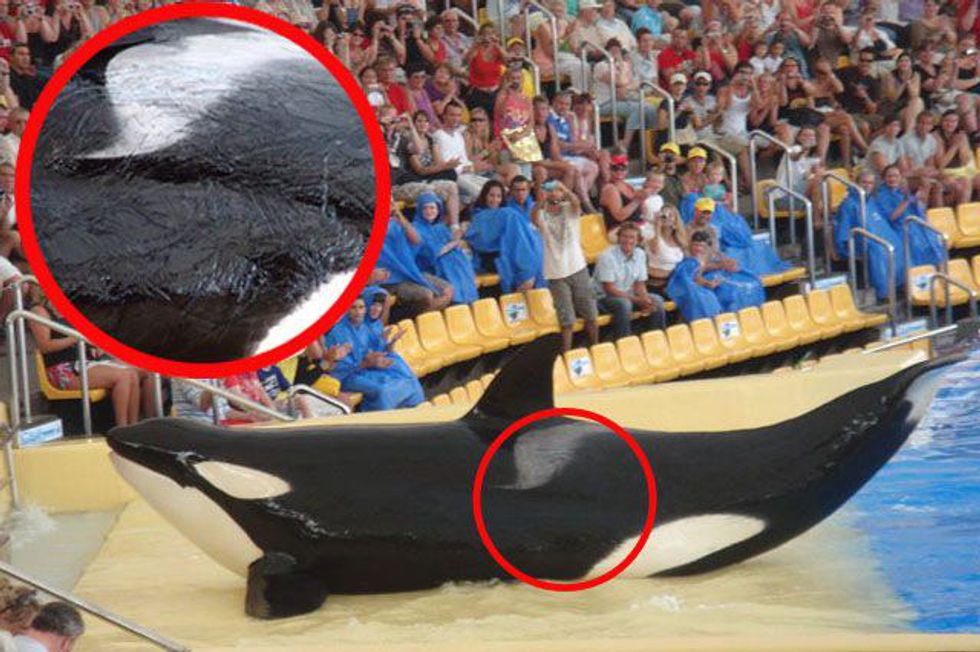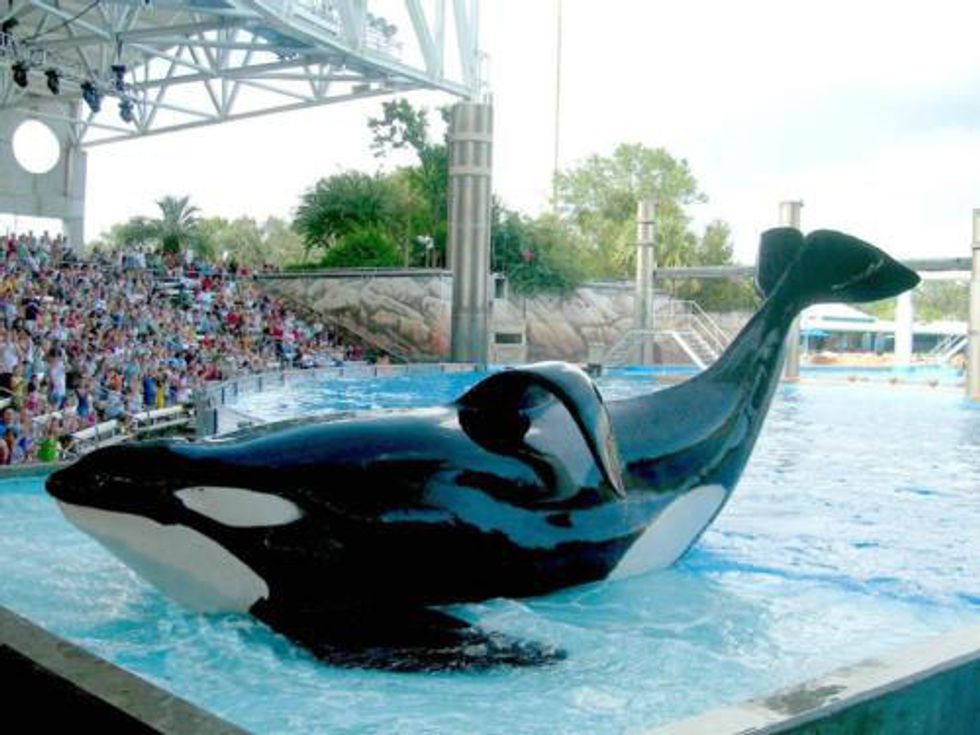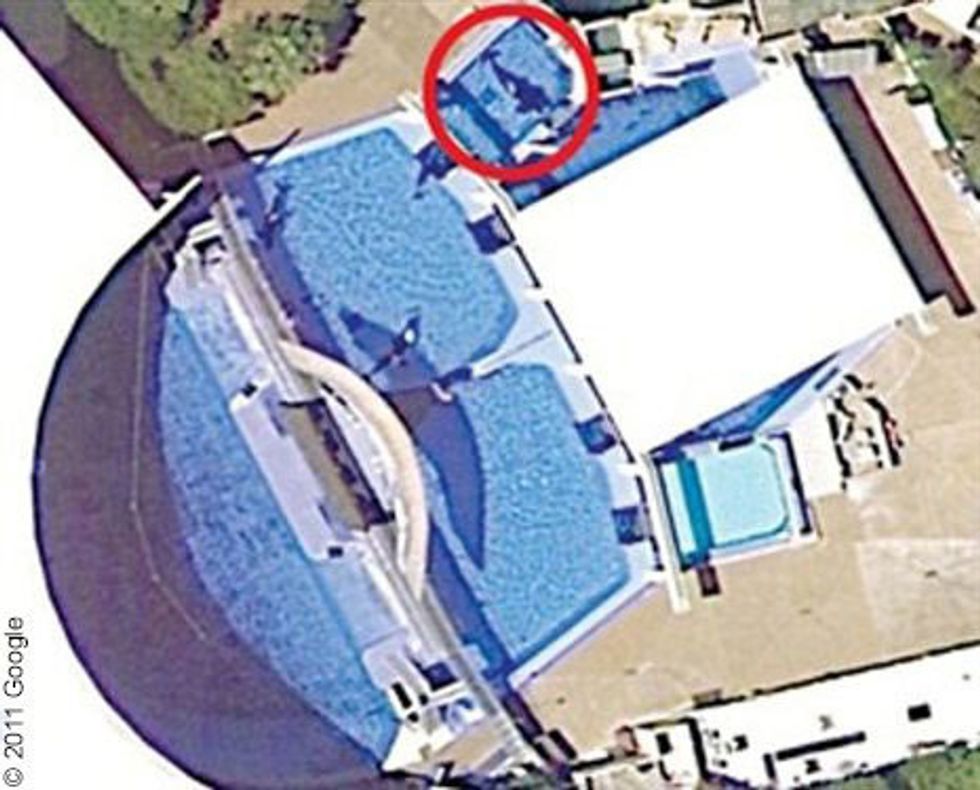Tilikum, a SeaWorld orca is dead. The subject of the documentary "Blackfish" was based on passed away on Friday, January 6. The killer whale was suffering from a lung infection and had been receiving treatment for it for about a year. (That being said they aren't being very forthcoming on which particular illness he had, just that it's a bacteria that can be found in natural and zoological settings.) While the death of Tilikum is, of course, a tragedy, there's another tragedy here. The life of Tilikum.
Tilikum was captured near Iceland in November 1983. The whale was two years old when he was taken from the open ocean. It's worth mentioning that killer whales usually stay with their mothers for all their lives, even after they have their own children. These are not brainless animals wired to do nothing but reproduce and find their next meals. There is a strong bond between mothers and their calves that last as long as either is alive.
After that, he spent a year in a cement holding tank in Hafnarfjörður Marine Zoo, near Reykjavík, Iceland. Killer whales swim hundreds of miles a day in the open oceans. How can any tank, or any enclosed space, compare to that.
It's important to understand that orcas in the wild travel in pods. They don't even do that thing where they kick out the males when they reach a certain age of maturity like deer and lions do. (Although the bull orcas are kept to the perimeter or the pod, but that's not really the point) They're intelligent creatures that have an extensive sense of self. They are individuals and they see each other as individuals too. They stay with their mothers in their pods until the day they die.
In fact, when Katina's calf Kalina was taken from her, she started making noises that nobody had ever heard before. SeaWorld brought in a specialist to figure out what she was doing they found that these were long distance calls. Katina was making noises nobody had ever heard
Taking an orca calf from its pod is comparable to taking a child from their parents.
From, Iceland, he was taken to Sealand of the Pacific, in British Columbia, Canada. (And, no, that's not the same thing as SeaWorld). The tank that he spent his days in was 100-foot-by-50-foot and 35 feet deep. The side module that he spent his nights in was even smaller. It was 31 feet long, Tilikum was a 20-foot whale at this point. It has been described by a visitor as "A dingy pool with whales".
There were two other orcas at Sealand of the Pacific, and sharing the same tanks as Tilikum. Two female orcas called Haida and Nootka.
This is where knowledge of the orca as a species comes in hand. Orcas are very social creatures. They travel in pods and communicate nearly constantly. But, no two orca pods are alike. They have different ways of socializing, different mannerisms and pretty much speak different languages. Remember, Tilikum, Haida, and Nootka were all from different pods.
Not to mention, the fact that orcas are a very matriarchal species. Not only do the mothers stay with their offspring all their lives but they also call all the shots, they're the boss as far as the rest of the orcas in their pods are concerned. So Tilikum was at Haida and Nootka's mercy, and neither had much mercy to spare.
Former Sealand of the Pacific employees recounted that to get the resident orcas back into their tiny module at night they would withhold food during the day and lure them back into the module at night. Apparently, it was the only way to get them to cram themselves back in.
If any tricks weren't performed correctly food was withheld from all the whales. No pressure, right?
In the mornings Tilikum would often have long bleeding scratches running up and down his body. Neither of the two females would, just Tilikum. There was only one explanation. In the night the Haida and Nootka would rake the smaller male with their teeth out of frustration no doubt.
Orcas in the wild don't have them. If tensions rise in the wild orcas can just swim away, they've got the whole ocean to put each other but a tank in an amusement parkTilikum suffered stomach ulcers while at Sealand of the Pacific that may have been caused by stress. It's not like anyone could have blamed him if they were.
However, this all changed on February 21, 1991, when Keltie Byrne slipped and fell into the tank with three exhausted hungry orcas. She was dragged to the bottom of the tank by Tilikum and then she was tossed around by all of the orcas. It took her fellow trainers hours to retrieve her body from the killer whales. She was 21.
Shortly thereafter Sealand shut down and liquidated all of its assets. Including Tilikum.
At this point, Tilikum was already the largest bull orca in captivity and that caught SeaWorlds eye real fast. Even though Tilikum's violent outburst was known to them, SeaWorld bought him with the intention to use him for breeding.
In no way did Tilikum's history dissuade SeaWorld, at least 54 of SeaWorld orcas share Tilikum's genes.
After being moved to SeaWorld, in Florida, he exhibited more instances of violence. He also showed other abnormal repetitive behaviors such as chewing the concrete side of his tank and metal grates. This isn't an unusual thing for orcas in captivity to do, though it does wear down their teeth in ways that are rarely seen in the wild.
On July 6, 1999, Daniel P. Dukes snuck into Tilikum's tank, somehow bypassing SeaWorlds security, and went skinny dipping with a killer whale. Nobody knows exactly when Dukes died but Tilikum definitely killed him. He tossed around Dukes's body and even after he was dead continued to play with his dead body. It's also reported that he bit off Dukes's genitalia. When SeaWorld employees came to work they found Tilikum parading Daniel P. Dukes's lifeless body around his tank, the body splayed across his back.
Another clear sign of Tilikum's discontent was his collapsed dorsal fin. SeaWorld will tell you it's an extremely common phenomenon in all orcas, in the wild or in captivity, and if you look at their whales you might just believe them. But if you ever have the chance to see an orca in the wild you won't see a collapsed dorsal fin. A collapsed dorsal fin is something you'll find on an unhealthy orca, and most in SeaWorld's care have them.
Dr. Lori Marino is a professor of neuroscience and behavioral biology at Emory University. She specializes in cetacean neuroscience and took an MRI of an orca's brain. What she found was stunning. The area of a killer whale's brain that comprehends emotions is huge and extensive. Scientists, like Dr. Marino, can only draw the conclusion that orcas are extremely emotional beings and that they have an immense sense of self.
Isn't it possible to think that a mind so emotionally evolved could be broken? Is it insane to believe that the treatment of an animal as advanced as an orca could be perceived by that mind to be torcher? Is it feasible that a creature with no way to communicate it's frustrations might find another way to lash out at the small tank of a world he's kept to?
On February 24, 2010, Dawn Brancheau was Tilikum's third victim. She was a senior trainer at SeaWorld and had been working there for fifteen years. Tilikum grabbed her by the arm and dragged her down into the tank. He scalped her and dismembered her. Tilikum refused to give up some parts of her, and the trainers were unable to retrieve all of her from Tilikum's tank.
After Dawn's tragic death Tilikum was kept in a tiny enclosure for about a year. He was unable to communicate with other orcas or interact with humans. When in the wild orcas are born, live, and die with their pads. While other herding animals run away from danger, orcas don't not when it's one of their own that are in trouble. When orca calves are caught in the nets and are being captured for establishments like Sealand of the Pacific and SeaWorld their mothers hover on the other side of whatever barrier is between them and their precious calves.
If these creatures are this social then what would happen when you cut nearly all communication and nearly all stimulation? He reportedly floated listless and unmoving for hours which isn't something wild orcas have ever done.
Tilikum isn't the only aggressive killer whale in captivity. SeaWorld alone had hundreds of pages of listed incidents where orcas rammed, lunged at, pinned, bit, and swam aggressively with trainers. And apparently, it's never occurred to them that humans aren't meant to stand on the noses of wild creatures who can kill them easily. Many of these instances have lead to injuries and some near death instances.
SeaWorld will you that the average life expectancy of a killer whale is something like 13 years. But that's only because the killer whales in their care only live that long. They won't tell you that in the wild you can expect a male orca to live to 60-70 years and females can live from 80-100 years.
But in 2014, a 103-year-old orca called Granny was spotted off the coast of Canada. She and her whole pod, her children and grandchildren and great-grandchildren swim hundreds of miles a day. SeaWorld has said that killer whales die before 20, because most of theirs do, and that they don't swim hundreds of miles a day, because most of theirs can't.
In fact, Canuk, one of her many children grandchildren was captured and held at SeaWorld, died at the age of four.
People have died, more than just these three. (You should know that there are no known instances of orcas killing humans in the wild) Orcas have died. (In fact 62 orcas have died while at SeaWorld at not a single one from old age.) This isn't benefiting anyone but the crowd of people going ooohhh and ahhhhh as they get splashed by a wild animal in a tank that probably has a collapsed dorsal fin. And tell me this, are you planning on taking to trip to SeaWorld anytime soon?
Tilikum, rest in peace. I mourn the death you had, and the life you could have had.






















